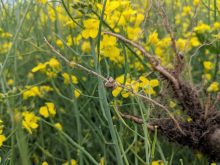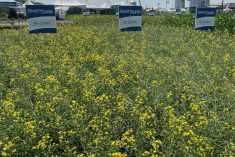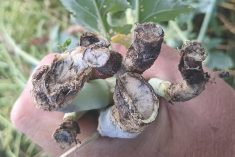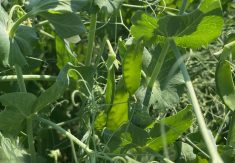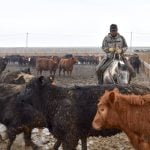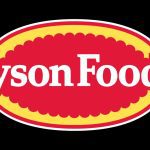Steve Cowan understands the importance of making the right choice when it comes to canola variety selection.
Cowan owns and operates a 3,000-acre grain farm near Camrose, Alta., where he grows canola, wheat and barley. He also works as an agronomist with the Crop Management Network and advises fellow farmers in the region on how to maximize the potential of their operations.
He says choosing the right new variety, whether for one of his clients or for his own farm, is absolutely critical.
Read Also
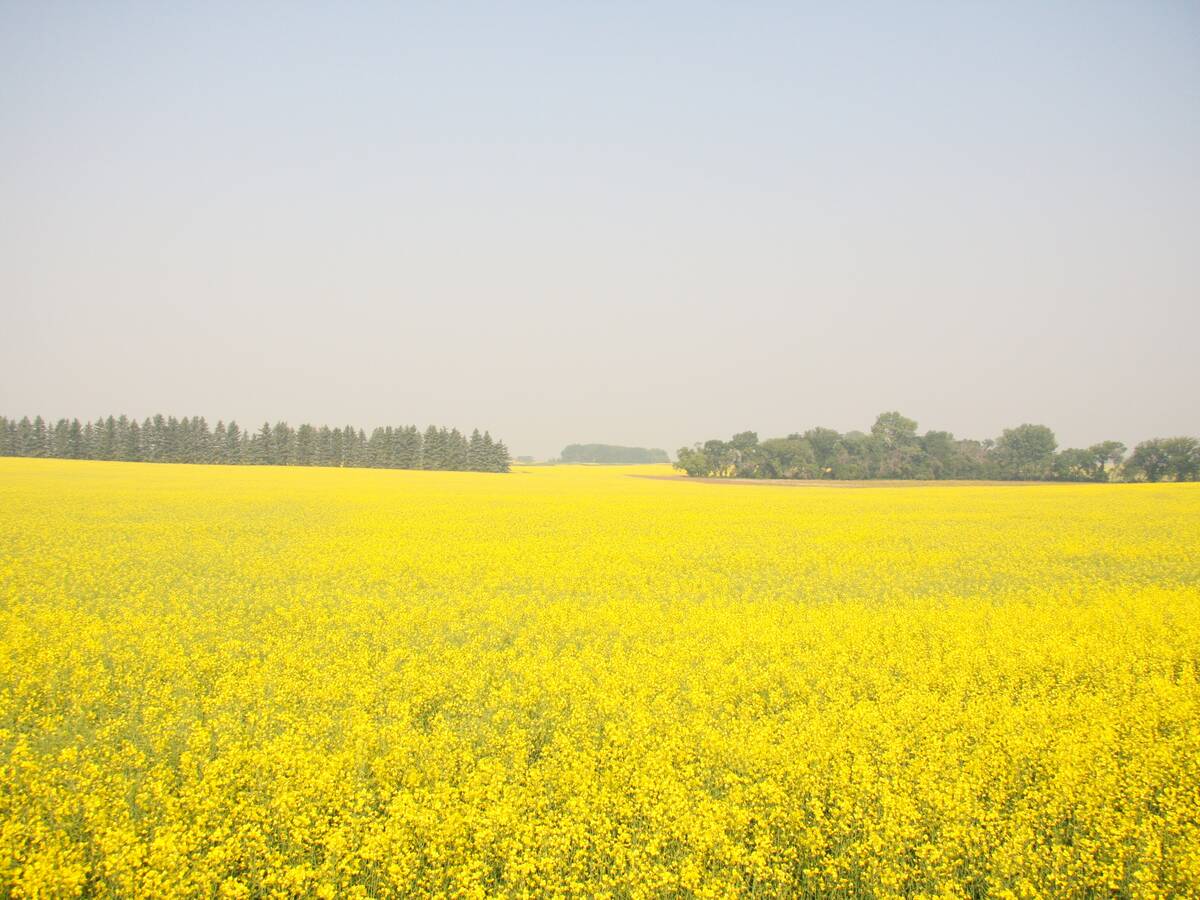
Micronutrient applications compared in canola
An ongoing northeastern Saskatchewan trial looks at micronutrient applications, specifically boron, copper and zinc, to see whether those applications boost yield in canola crops.
“Canola is about a third of the acres (on his farm), so it’s a pretty important decision, especially being a cash crop,” says Cowan, owner and manager of Newrosewan Grain Farm. “When that land is going to be canola every third year, you want to make sure you get it right (with a new variety).”
Clubroot resistance is a major deciding factor for Cowan.
“First and foremost, I want the latest and greatest in clubroot technology,” he says, adding varieties that provide multigenic resistance with multiple resistance genes is a must for him.
Another deciding factor for Cowan is the pod shatter resistance trait it offers.
“Last year was actually the first year we straight cut any canola and I think this year we will do so again,” he says.
“With the dry start we had (last year) there was a little bit of patchiness to some of the canola. (Pod shatter resistance) gives us that added flexibility. When we do have that patchiness in the field, we can leave it out there longer and get more maturity.
“Whether we plan to straight cut or not, just to have the option to straight cut, I think it’s pretty important,” he says.
Standability and harvestability are two other considerations. Cowan says standability is essential if he’s going to straight cut his canola crop. In terms of harvestability, he says an earlier mid-season variety is preferable since the crop is already well on its way if it gets hit by an early frost.
Herbicide traits are becoming a more important consideration as well, he adds, and are part of any integrated pest management strategy.
Cowan’s advice to other growers is to start small with their own on-farm field trials, especially since some varieties may work well in one geographic region but not another. If it works well in one field, consider planting more the following season, he adds.
Do your homework
Brady Mireau owns and operates a 10,000-acre grain farm near Harris, Sask. He says he does his homework when choosing any variety of canola.
“It’s obviously a pretty big decision for us,” says Mireau, who checked out several new varieties at this year’s Ag in Motion show in Langham, Sask.
“We have to take into account what we’ve had for the field’s history and which different varieties of canola we’ve run in the past. We don’t really struggle a lot with clubroot resistance, but the TruFlex varieties are a good option for us because we do have a lot of glyphosate-resistant kochia coming.
“To hit it with a couple of different modes of action to get it under control is a big win for us.”
Mireau says price is a major consideration but not the only one.
“I try to get away from basing it solely on the price of the bag of canola because a lot of times that can deter you from what you need as a grower.”
He advises growers to ask other farmers how different varieties have worked for them before choosing to plant them in their own fields. He also suggests growers be willing to try new varieties even though they may not be entirely comfortable doing so.
“Don’t be afraid to step out of your comfort zone or the types of canola you are used to growing,” Mireau says. “Don’t be afraid to stray away from them and try something else. I like to see what everybody has to offer because margins are so tight and you want to see what’s going to work the best on your farm.”
Maturity a factor
Adam Thomson operates a 3,500-acre grain farm near Stead, Man. He says he considers several factors when selecting a variety, including disease tolerance, yield and maturity. The latter is particularly important to him because of a shorter growing season on his farm.
As careful as he is when choosing varieties, Thomson says he’s prepared to take risks.
“Sometimes we just kind of wing it,” he says, laughing, while checking out a number of seed booths at Ag in Motion.
“We’ll look at some plots and see if something does well in our area. Maybe some neighbours have grown it before and we’ll try it. We wouldn’t seed it to our whole farm, but maybe try a quarter section and see how that does. If it works, we’ll do more next year.”
Ultimately, Thomson says the choice comes down to knowing what works best on your farm.
“You’ve just got to see what works for your own farm or your area. It’s different in every area. We would be on a field-to-field type (situation) because of different soil types and stuff like that.
“Even for seed treatment, if we had canola close to another field previously, we might be concerned about flea beetles so we might want an extra insecticide in the seed treatment.”
Focus on yield
Grant Morgan operates a 1,200-acre grain farm near Prince Albert, Sask. He says yield is his primary consideration when selecting a canola variety. Straight cut varieties are another priority, since he straight cuts all of his canola. His choice often depends on weed pressure in the previous year or what he expects during the coming growing season.
His advice to other growers — do your homework on any new products and keep an open mind when considering the choices.
“I’m trying some new Clearfield varieties (this year). They’re non-GMO but we’re getting more of a bonus when we sell at the end because it’s a dollar to a dollar and a half more a bushel,” says Morgan, adding farmers should ask their sales reps about any new products.
Check resistance
Cameron Saunders farmed in his native Scotland before moving to Canada two years ago and now farms near Eaglesham, Alta.
He says resistance for bugs and diseases such as clubroot are two of his main considerations when choosing canola varieties. He also looks for standability and harvestability. However, price typically trumps most other considerations.
“You want to put in the least amount (of money) and get back the most possible,” he says. “If it’s too expensive you are going to go for something cheaper, especially if it’s something newer on the shelf where you don’t know exactly how it’s going to come out in terms of yield and such.”
Crushing Clearfield
Robert Krueger owns and operates a 4,500-acre grain farm near Borden, Sask. He says canola variety choice is simple. He’s a shareholder in the Virtex Grain Exchange in Saskatoon and the farmer-owned operation requires plenty of Clearfield canola to crush. As a result, he and his son grow as much Clearfield as possible.
Other considerations for Krueger are weed pressure, maturity and rainfall, which he says is playing an increasing role as Saskatchewan and other parts of the Prairies continue to deal with soil moisture deficits.




